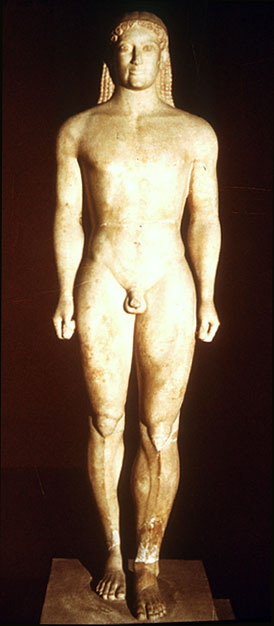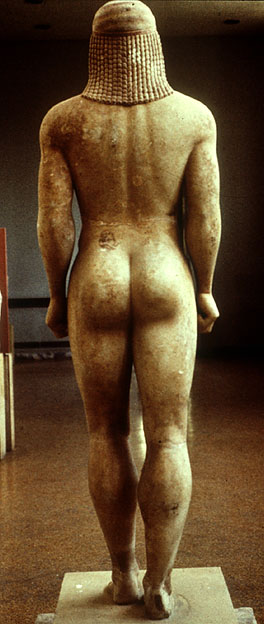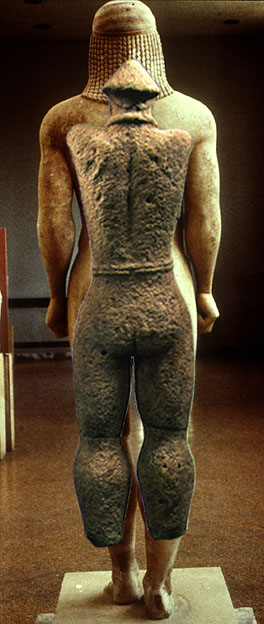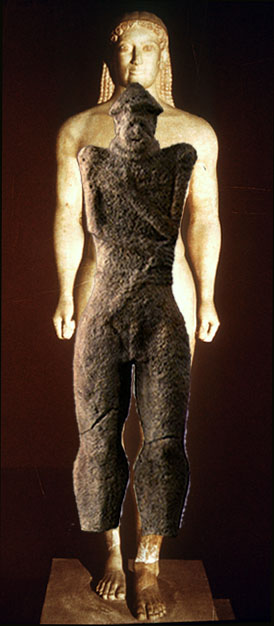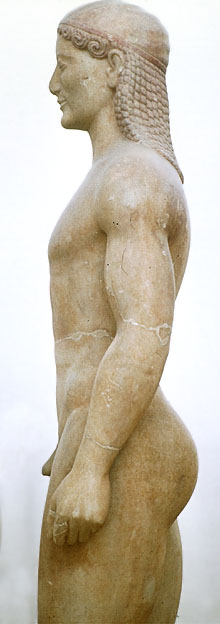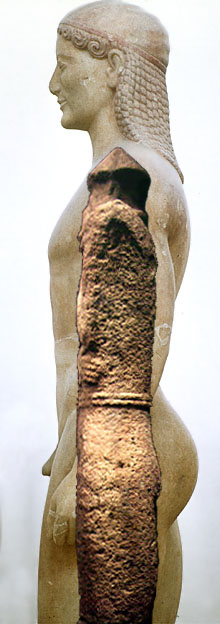Hirschlanden Comparanda -- Ptoon Kouros and Aristodikos



These two kouroi date earlier than the Hirschlanden warrior -- the Volomandra kouros is from ca. 575-550 BCE, while the Anavyssos kouros is about a quarter-century younger, ca. 550-525. They are both in the Archaic style, with large, swelling thighs, offset knees and sharply ridged shinbones. I tried to match up the photographs at the knees in order to demonstrate any relationship between the Hirschlanden warrior and the kouroi. The frontal composites clearly show that even the heftier kouroi are much longer in the thigh than the Hirschlanden warrior, and their calves taper to slender ankles.
The Volomandra kouros and others of the archaic period are typically very broad in the frontal view, but comparatively slim in the side view, with a distinct swaybacked curve at the waist. The chest is quite massive, but the neck is extremely slender.
The side-view composite of Hirschlanden with the Anavyssos kouros underlines the difference in proportions, in conception of the human figure. Not only is the warrior quite lacking the the voluptuous buttocks and thighs of the kouros, but the very roundness of a three-dimensional human form seems foreign to it -- we are made distincly aware of the shallow block of stone from which it was carved. In addition, the side view calls into question the possibility of there being enough stone in a cut-down kouros for the Hirschlanden head. Finally, it illustrates the impossibility of converting a striding stance into a parallel one.


